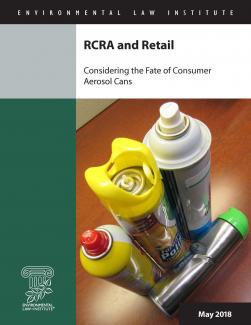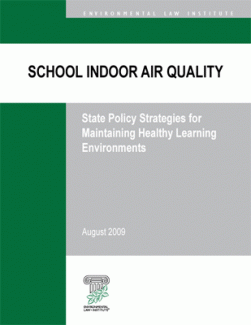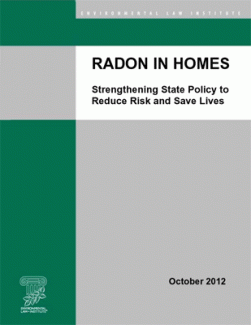Legionella Management in Building Water Systems
Developments in State Policy
Summary of ASHRAE Standard 188-2018

Minimizing waste generation includes diverting waste streams to reuse and recycling as well as recapturing materials. In devising new approaches for the management of materials and the diversion of wastes under RCRA, federal regulators can draw on their knowledge and years of experience working with particular sectors and materials. In the retail sector, managing discarded and returned consumer aerosol cans can hit the "tripwire" for RCRA ignitability, requiring their management as hazardous waste.

The quality of the air inside our nation’s 125,000 schoolhouses is important not only to the physical health and well-being of students and staff, but also to the core mission of our schools — educational excellence and academic achievement. This report discusses how state policy can ensure that all K-12 schools address basic IAQ issues as part of their ongoing operations and maintenance activities. The report examines leading state policy models and identifies key considerations for developing an effective policy.

Radon is the second leading cause of lung cancer and the seventh leading cause of cancer mortality overall. Many states have adopted laws, regulations, and policies that address radon in some fashion, yet stronger measures are needed to accelerate action. Radon in Homes discusses key developments in state policy and highlights opportunities for strengthening policies to reduce risk from indoor radon exposure.
This handbook is a compilation of materials developed for Using Environmental Laws and Alternative Dispute Resolution to Address Environmental Justice, a project funded by the U.S. EPA Office of Environmental Justice under assistance agreement No. TJ-83300001. The views expressed herein should not be attributed to EPA, nor should any official endorsement be inferred.
(Washington, DC) — States across the country are reaping the benefits of years of experimentation with innovative new approaches to brownfields and petroleum brownfields remediation and redevelopment, according to a report released by the Environmental Law Institute. The study provides concrete examples of applied practices and programs currently in use throughout the nation, along with information about regulatory and procedural changes that states have successfully deployed.